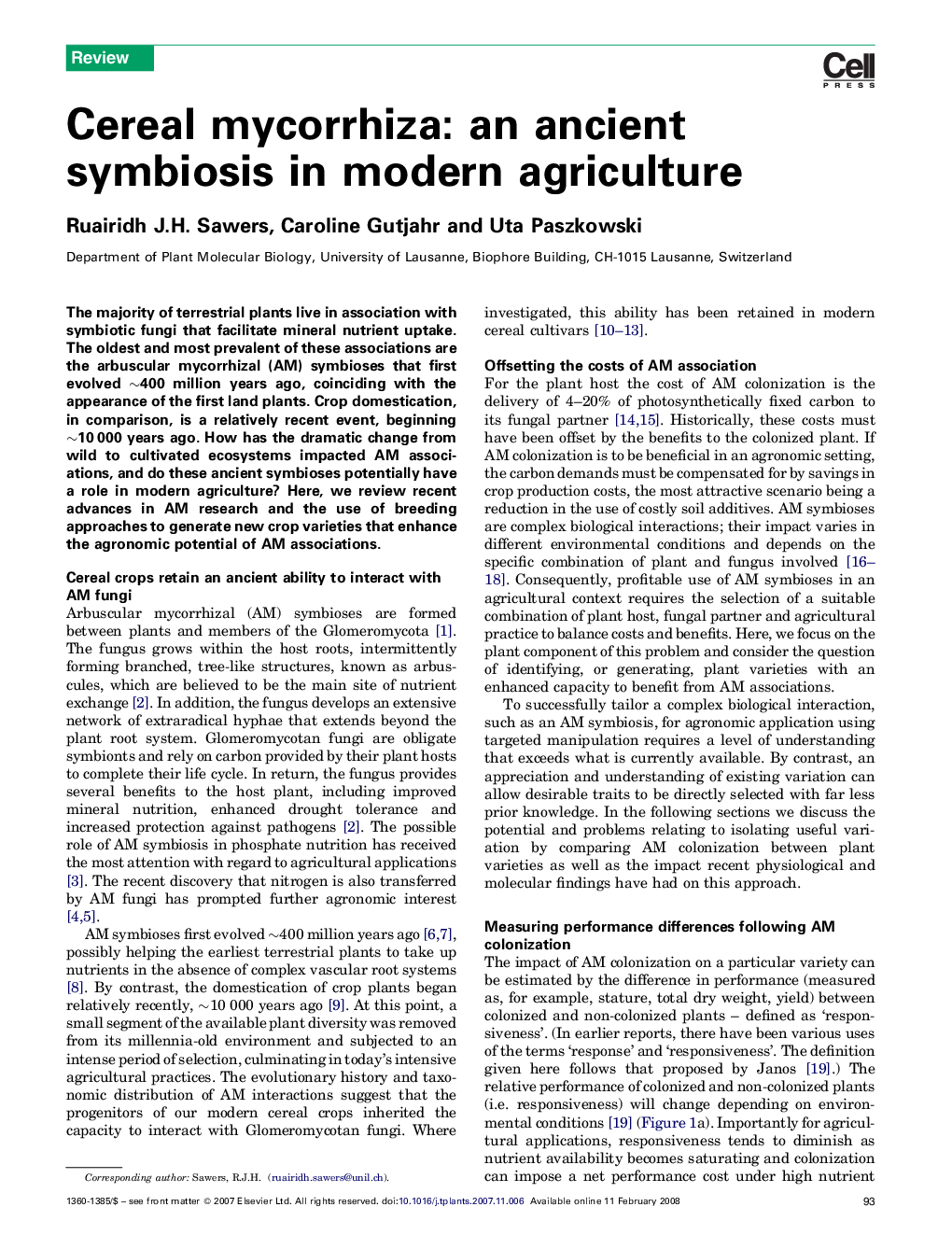| Article ID | Journal | Published Year | Pages | File Type |
|---|---|---|---|---|
| 2826947 | Trends in Plant Science | 2008 | 5 Pages |
Abstract
The majority of terrestrial plants live in association with symbiotic fungi that facilitate mineral nutrient uptake. The oldest and most prevalent of these associations are the arbuscular mycorrhizal (AM) symbioses that first evolved ∼400 million years ago, coinciding with the appearance of the first land plants. Crop domestication, in comparison, is a relatively recent event, beginning ∼10 000 years ago. How has the dramatic change from wild to cultivated ecosystems impacted AM associations, and do these ancient symbioses potentially have a role in modern agriculture? Here, we review recent advances in AM research and the use of breeding approaches to generate new crop varieties that enhance the agronomic potential of AM associations.
Related Topics
Life Sciences
Agricultural and Biological Sciences
Plant Science
Authors
Ruairidh J.H. Sawers, Caroline Gutjahr, Uta Paszkowski,
